The snowshoe market is flooded with many snowshoe options, making it difficult to decipher how to find the perfect pair for you. It can be easy to choose the first or only pair and then end up with snowshoes that don’t meet your needs.
Snowshoes have different features that help them navigate certain types of terrain. Each snowshoe is a little different, but knowing the terrain you want to explore, and your size will be beneficial when choosing your snowshoe.
In this guide, you’ll find a description, features, and examples for the following:
Hiking/Recreational Snowshoes – Flat and Rolling Terrain
Technical Snowshoes – Steep Mountainous Terrain
Running/Fitness Snowshoes – Packed Trails
Wide Surface Areas – Deep Snow
Sizing of Your Snowshoe

We want you to have a happy snowshoe experience and one way to ensure a good time is to choose the right snowshoes for your outing! Photo: Susan Wowk
Some of the links in this article may contain affiliate links. When you purchase using these links, part of the proceeds go to Snowshoe Mag. Additionally, as an Amazon Associate, we earn from qualifying purchases. Please see our disclosure for more details.
Recreational/Hiking Snowshoes – Flat and Rolling Terrain
Recreational or hiking snowshoes are an optimal choice for your first pair of snowshoes and are suitable for flat terrains and rolling hills. These snowshoes typically have some form of “trail,” “trek,” or “hike” in the name or description.
These snowshoes are usually among the most affordable, with an average number of features. Most snowshoes for kids and traditional wooden snowshoes also fall within this category.
Hiking Snowshoe Features
These snowshoes may include the following features:
Bindings: Simple, easy-to-use bindings such as nylon, polyurethane, or TPU straps that are great for a wide variety of footwear and large boot sizes, or BOA closure that is easy to use with gloves/mittens
Frame: A rounded frame, which is helpful for deep snow, or a v-tail frame (pointed in the back), which is helpful for snow build-up and increased maneuverability
Materials: Made of TPU plastic, aluminum frames, white ash, or recyclable materials (like Crescent Moon Eva snowshoe)
Traction: Little to average traction, including steel, aluminum, or plastic cleats underneath the snowshoe’s toe and/or heel. You’ll occasionally find crampons underneath the sides of the foot, though it’s not as common.
Hiking Snowshoe Examples
Here are a few examples of hiking/recreational snowshoes.
Chinook Trekker
Purchase at Amazon
Read our review
GV Huron
Purchase at Amazon
Read our gear guide
MSR Evo Trail
Purchase at REI | Amazon
Read our gear guide
Tubbs Xplore
Purchase Men’s at REI
Purchase Women’s at Amazon
Read our review
Read More: 7 Beginner Snowshoes for Varied Terrain
Technical Snowshoes – Steep Mountainous Terrain
Technical snowshoes help navigate unpredictable terrain and have the most features on them. For this reason, these snowshoes are usually more pricey when compared to other models. But, they pack advanced features and are made of very durable materials.
Snowshoes in the technical category may feature the words “alpine,” “mountain,” “ascent,” or similar descriptions. Also, if choosing snowshoes for snowboarding, technical snowshoes are the way to go. These snowshoes are a must-have if you plan to break your trail through steep terrain.
Technical Snowshoe Features
These snowshoes may include the following key features:
Bindings: More advanced bindings for a tighter and more precise fit, such as a toe box or shoe-like binding. You may also find nylon, polyurethane, or TPU straps ideal for a wide variety of foot sizes (or snowboard boots) or a BOA closure for easy use with gloves.
Frame: They might include a serrated frame, which can be heavy but provides excellent grip when mountaineering, or can be tubular (rounded at both edges) or v-frames (round at toe, pointed at heel) for deep snow
Materials: Made of very durable materials like an aluminum frame and nylon decking, carbon fiber, or other strong materials
Traction: Aggressive traction such as cleats/crampons under the toe, heel, and sides that may be at various angles to provide advanced grip
Accessories: Support for the foot, such as a heel lift or bar to provide extra calf support while climbing a steep slope, or toe/heel pieces to limit sliding of your foot while in the binding
Technical Snowshoe Examples
Here are a few examples of technical/mountaineering snowshoes.
Atlas Montane
Purchase Men’s at REI
Purchase Women’s at Backcountry
Read a similar review (Atlas Apex MTN)
MSR Lightning Ascent
Purchase at Men’s at MSR
Purchase Women’s at MSR
Read our review
TSL Symbioz Elite
Purchase at REI
Wildhorn Delano X2
Purchase at Wildhorn | Amazon
Read our gear guide
Read More: Why Use Snowshoes on Your Next Mountaineering Adventure
Running/ Fitness Snowshoes – Packed Trails
Along with the numerous health benefits of snowshoeing, you will stumble upon running snowshoes during your snowshoe browsing. Running snowshoes are intended for those who prefer packed snow and groomed terrains instead of deep powder.
Running Snowshoe Features
These snowshoes may include the following features:
Binding: Increased security on the foot and quick and easy to use. Straps and bindings that resemble shoes are common. As an alternative, some running snowshoes allow you to remove the binding to mount your running shoe directly to the snowshoes.
Frame: Usually narrower and shorter than other snowshoes to increase mobility and speed in the snow. However, you will still find most running shoes have a tubular (rounded ends) or v-tail (pointed at the back) design.
Materials: Lightweight materials made of TPU (type of plastic), aluminum frames, foam, or similar material
Traction: Average grip – you may see a crampon underneath the toe and heel or traction made of molded TPU bars on these types of snowshoes
Running Snowshoe Examples
Here are a few examples of running/fitness snowshoes.
Atlas Run
Purchase at REI
Read a similar review (Atlas Race)
Crescent Moon Luna
Purchase at Amazon
Read a similar review (Crescent Moon Eva)
Dion Racers
Purchase at Dion-NeviTREK
Read our review
Read More: Choosing Running and Racing Snowshoes Starts Here
Wide Surface Areas – Deep Snow
Though all snowshoes can help limit sinking in the snow, certain snowshoes perform better than others in bottomless snow. Thus, it’s helpful to consider the depth of snow when choosing your snowshoes.
For example, snowshoes with a smaller surface area tend to have difficulty in bottomless snow, especially powder snow that’s light and dry. So to help limit sinking and increase floatation in deep snow, you’ll want to look for snowshoes with a wide surface area.
Frequently, snowshoes with ‘backcountry’ in the name or description specialize in this type of terrain. Some brands like MSR also offer tail extenders to help limit over-sinking in deep snow conditions.
Traditional wooden snowshoes are particularly good at navigating deep snow. If you choose wooden snowshoes, take proper care of them so they last.
Deep snow snowshoes can be recreational or technical, but not all recreational or technical snowshoes excel in deep snow conditions. Also, the snow will most likely be wetter if you live in more humid areas or near the coast. In wet snow, you don’t typically sink quite as deep as powder snow, but floatation is still essential, especially if the snow is deeper than 12 inches (30.5 cm).
Deep Snow Snowshoe Examples
Here are a few examples of snowshoes that excel in deep snow.
GV Alaskan
Purchase at Amazon
Read our gear guide
Louis Garneau Premier
Purchase at Moosejaw
Northern Lites Backcountry
Purchase at Northern Lites
Sizing of Your Snowshoe
No matter what type of snowshoe you choose, the correct sizing of your snowshoe is crucial.
When considering sizing, it’s important to remember the primary function of snowshoes is floatation or preventing substantial sinking in the snow. So, the right snowshoe size will help distribute your weight equally on the snowshoe and limit how much you sink.
Weight Recommendations
If you look at the snowshoe description, most snowshoes have a recommended weight range. Remember that weight refers to your body weight and all the gear you carry.
The weight range is intended to limit sinking in the snow. Thus, it’s most important to consider when hiking in deep snow where you can sink. For example, if you’re over the recommendations in 3 feet (91 cm) of snow, you could sink too deep and have an unpleasant snowshoe experience.
However, if you are snowshoeing on packed trails or shallow snow where you will not sink, you don’t necessarily need to meet the weight recommendation to use that snowshoe. The manufacturer will also typically list whether the weight guidelines are for packed or powder conditions.
Read More: Types of Snowshoes for Big People and Heavy Loads
Binding Fit
In addition, another aspect of finding the right snowshoe size is the binding’s fit on your foot. Sometimes, snowshoers will only follow the weight recommendations but then purchase a snowshoe far too large for their foot.
Many manufacturers will list shoe sizes for each snowshoe based on the binding. But, if they do not, make sure that the binding of your snowshoe will comfortably fit your foot. The snowshoes shouldn’t be so large that they cause you to walk much differently than how you usually walk.
If you find a snowshoe that fits your foot correctly, but you do not fall precisely within that snowshoe’s weight requirements, that’s okay. You can always still use that snowshoe, as long as you’re not snowshoeing in bottomless snow where you can sink to the point you can’t lift your foot.
Overall – How to Choose Your Snowshoes
Knowing what type of terrain you want to explore is a significant first step when choosing your snowshoe. Then, you can select the size and style that works best for you. For more snowshoe options, also check out our gear guides and reviews.
What are your tips for how to choose the right snowshoe? Please share your thoughts with us in the comments below.
This article was originally published on November 18, 2018, and was most recently updated by Susan Wowk on September 27, 2022.
Read Next: Top 10 Snowshoeing Tips for First-Time Snowshoers


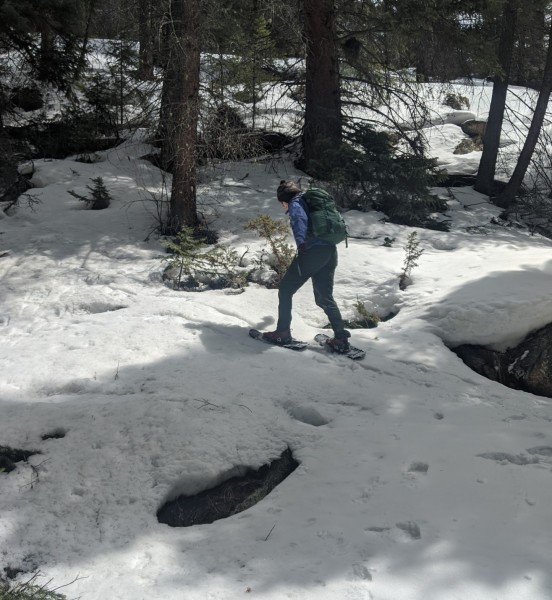
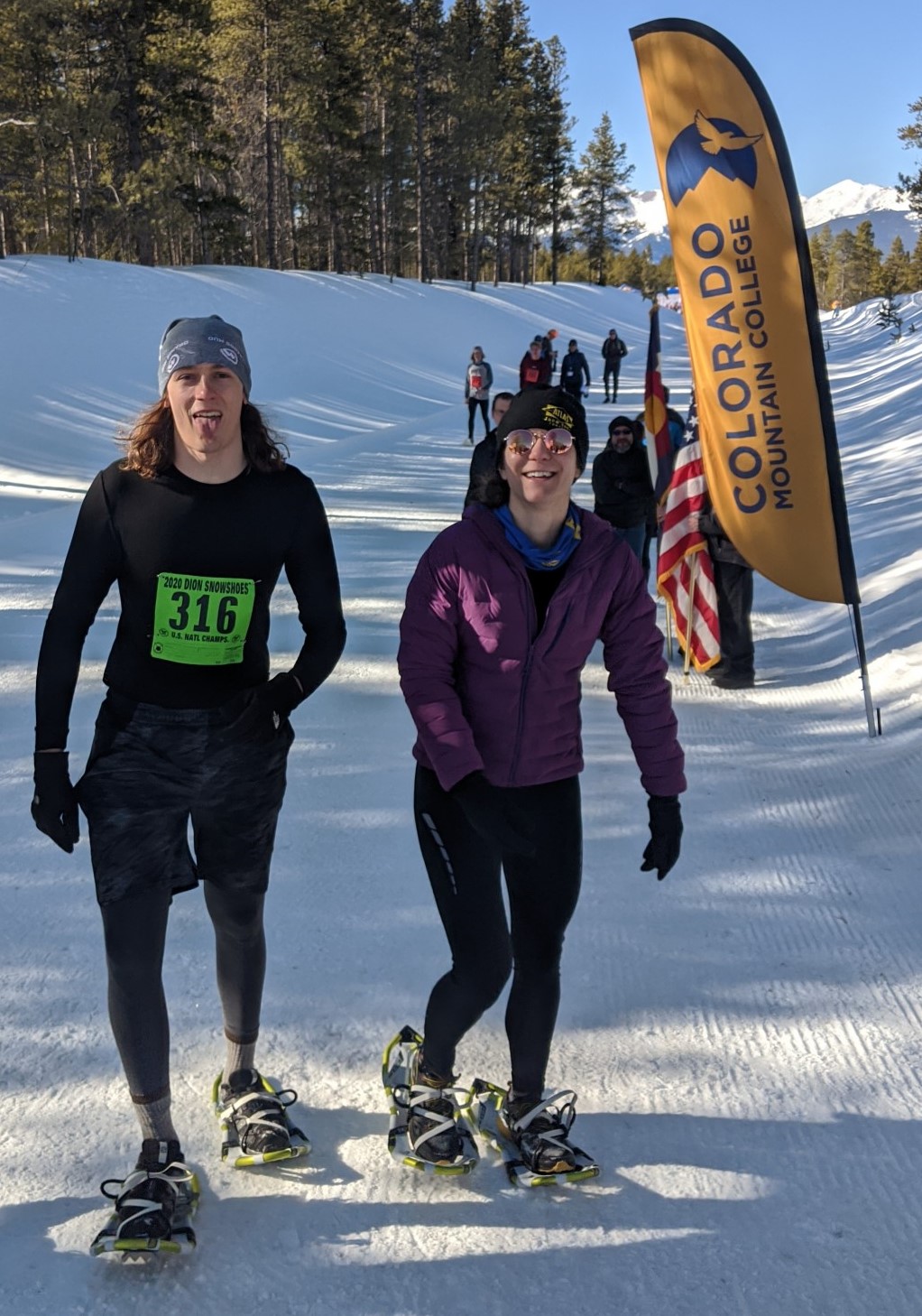
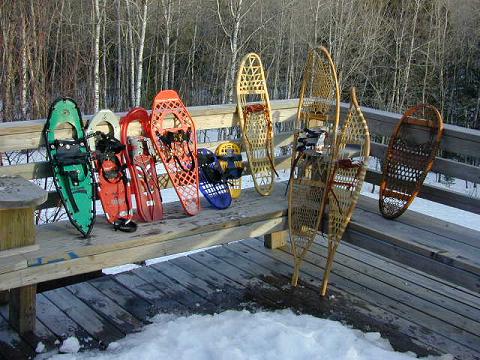
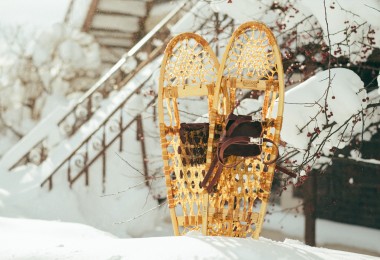

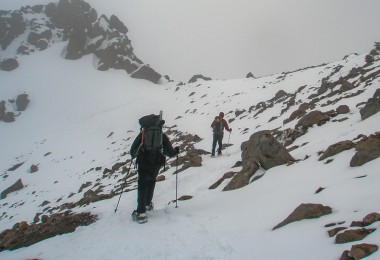
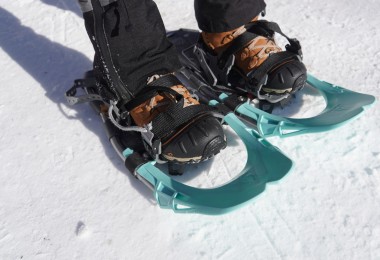

Beware of Tubbs Website Snowshoe Ratings
I purchased Tubbs Frontier Men’s snowshoes (directly through their web site) this year and had a problem with the back strap repeatedly coming loose and the shoe falling off. I tried to post a review with a 1 (out of 5) star rating. Despite them verifying me as a buyer they would not publish the review. After perusing the ratings of their 20+ men’s snowshoes I noticed they only posted one review with less than 3 stars. One person must have tried almost every type snowshoe in their inventory as he posted the majority of ratings for most snowshoes. I do not trust their ratings/reviews.
Hi Robert, I’m so sorry to hear that you had that experience on the Tubbs website and with their snowshoe! Thank you for sharing your experience with us here, and I hope you have been able to have some other great snowshoeing experiences this season. -Susan, Snowshoe Mag Editor
Thank you for your kind words. My wife and I are 70, are in our first season of snowshoeing. and have had many great excursions. I ended up buying a better pair (the same as my wife, who purchased after my initial purchase) which have a more secure strap in the back and do not come off.
Robert, I’m so glad that you’ve enjoyed your first season of snowshoeing and that you were able to find a pair of snowshoes that better suited your needs. I am sorry to hear about your experience with Tubbs, and again, I do appreciate you sharing it with us. Here’s to a few more fun snowshoe adventures this season with your new snowshoes 🙂 – Susan, SSM Editor
i should add that after the first failed attempt at posting a review, I tried to sneak one through their censors by by giving a 3 star rating, but with similar negative language. Tubbs still would not post on their website. Additionally, they refused a return after two weeks of use. More reputable companies like REI Black Diamond would have easily rectified the situation.